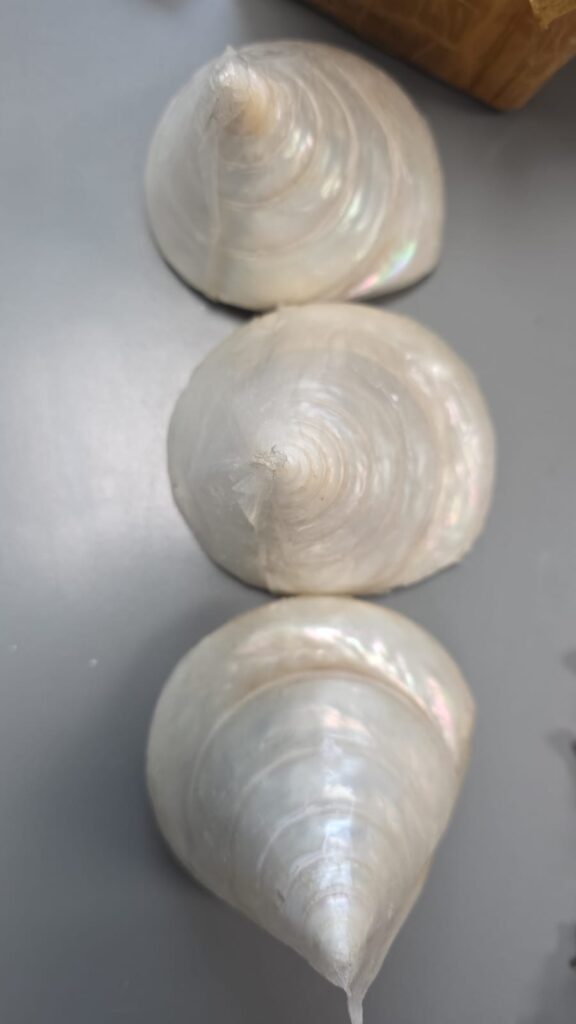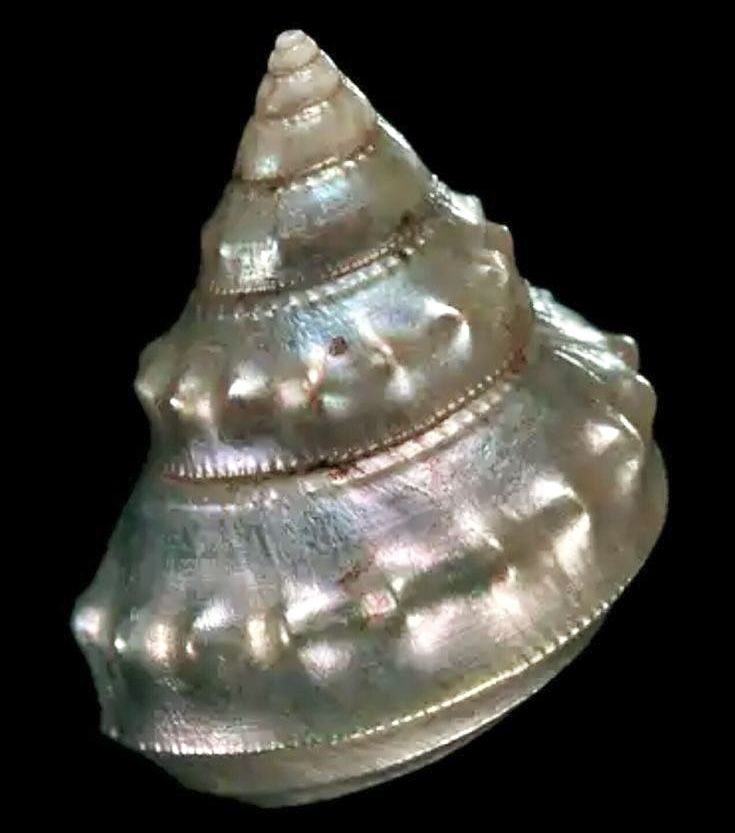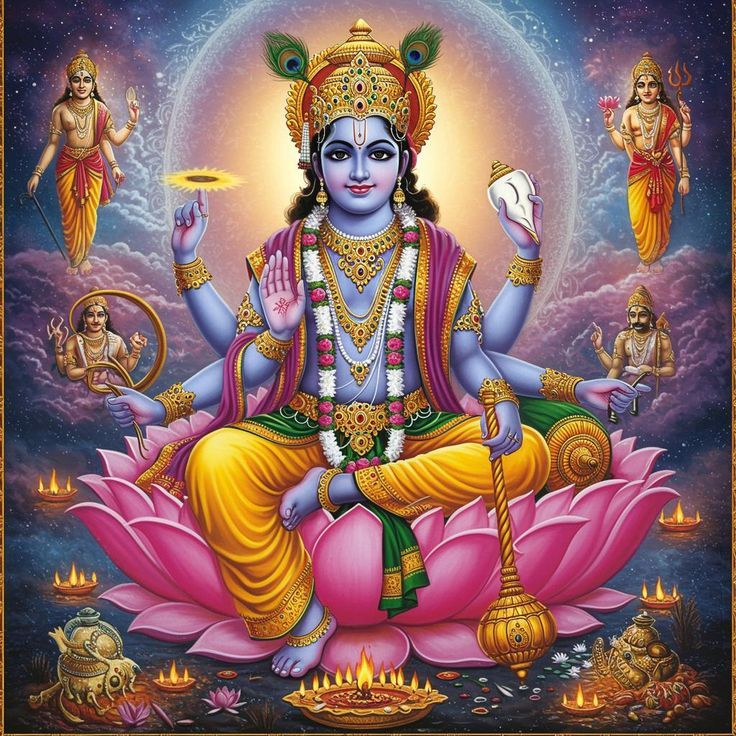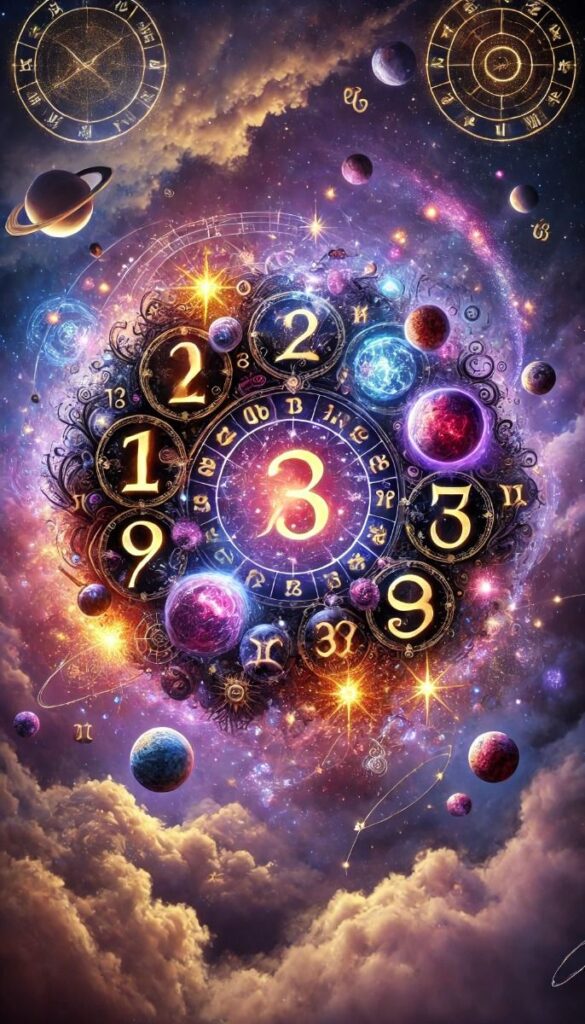
In the vast realm of ancient Indian spirituality and symbolism, Shankhs or conch shells hold a revered place. Among these sacred shells, Moti Shankh, also known as the Pearl Conch, is one of the rarest and most auspicious. Considered a symbol of prosperity, purity, and positive energy, the Moti Shankh is not only aesthetically beautiful but also holds immense importance in Vedic rituals, Vastu Shastra, and spiritual healing. Its rarity and natural formation make it a celestial gem that bridges the physical and metaphysical worlds.

Moti Shankh is a natural conch shell that resembles the shape and luster of a pearl (moti). Unlike traditional spiral conch shells, Moti Shankh is usually smooth, round, and white or silvery in appearance, with a natural iridescent glow. It is typically found in deep-sea regions, and is extremely rare, often classified as a sacred collector’s item.
While most conch shells are created from mollusks with an external shell, the Moti Shankh is believed to be formed inside the body of a particular marine organism, similar to the formation of a pearl. This unique origin gives it a metaphysical aura and connects it symbolically to the moon and the water element.

The rarity of Moti Shankh stems from the fact that it is not commonly found on the ocean shores or in shallow waters. It emerges from deep-sea mollusks under specific environmental conditions, making it less than 1 in 10,000 shells. Due to this rarity, genuine Moti Shankhs are highly valued, both monetarily and spiritually.
Some experts suggest that the Moti Shankh may be a gastropod shell with natural pearl-like calcite deposits, while others believe it is a fossilized form or a divine anomaly. Regardless of the scientific explanation, its lustrous surface, milk-white glow, and absence of spiral grooves make it a prized possession.

In Hindu mythology, the conch is associated with Lord Vishnu, the Preserver of the Universe. His divine weapon, Panchajanya, is a conch shell, symbolizing victory and dharma. Moti Shankh, due to its rarity and pristine form, is believed to be more spiritually potent than regular conches.
It is said that Goddess Lakshmi, the goddess of wealth and prosperity, resides in Moti Shankh. Worshipping this sacred shell is believed to invite wealth, harmony, and abundance into one’s life. Many legends mention that in the divine realm, gods use conch shells to initiate battles against darkness and to sanctify rituals.
In Buddhist and Jain traditions, conches symbolize the voice of Dharma and the spreading of positive energy across the universe. The spiral shape of conches is often interpreted as a representation of infinity, cyclical time, and the unfolding of cosmic knowledge.

According to Vastu, the smooth and round surface of the Moti Shankh does not trap energy, unlike spiral conches. Instead, it helps energy circulate freely across the environment, creating harmony and serenity.

Though primarily spiritual in nature, some scientific interpretations try to explore the conch’s influence on humans:

Here are some commonly observed benefits reported by spiritual practitioners and believers:
Benefit Explanation
Due to its rarity and demand, many fake or synthetic Moti Shankhs are sold in the market. Here are a few tips to identify an authentic one:

In astrology, Moti Shankh is especially beneficial for those under the influence of:
The Moti Shankh is more than just a sacred shell—it’s a symbol of cosmic balance, divine abundance, and emotional purity. Whether you view it through the lens of Vastu, spirituality, or cultural tradition, its impact is profound and deeply revered.
In a world often filled with chaos and material rush, the gentle presence of a Moti Shankh in your sacred space can offer a soothing reminder of nature’s wisdom, divine grace, and the timeless value of inner peace.
As the ancient scriptures say: “Shankham chaakram gadam shankham Vishnu-hastair dharayati sadaa, Yatra shankhah sthitah tatra devataah nivasanti.”
(Where the conch resides, there the gods dwell.)
If you liked this article or want to share some information with us then do write us in the comment section below.
Comment below your views. We would love to hear from you. Don’t forget to subscribe to us on our Social Channels to never miss out on any updates from us.
Author – Amit Pradhan
Find the information relevant? Visit our website to know more about such facts.
For an enquiry, write to us at [email protected]
👉 If you liked this article or, then do write us in the comment section below.
For Astrology, Numerology, and Reiki Services contact us today!
We also deal in original quality and Certified Rudraksha, Crystals and Gems.
👉 Shop Now Original Rudraksha & Crystals
For more daily updates do like and Follow Us and keep visiting www.jaymahakaal.com